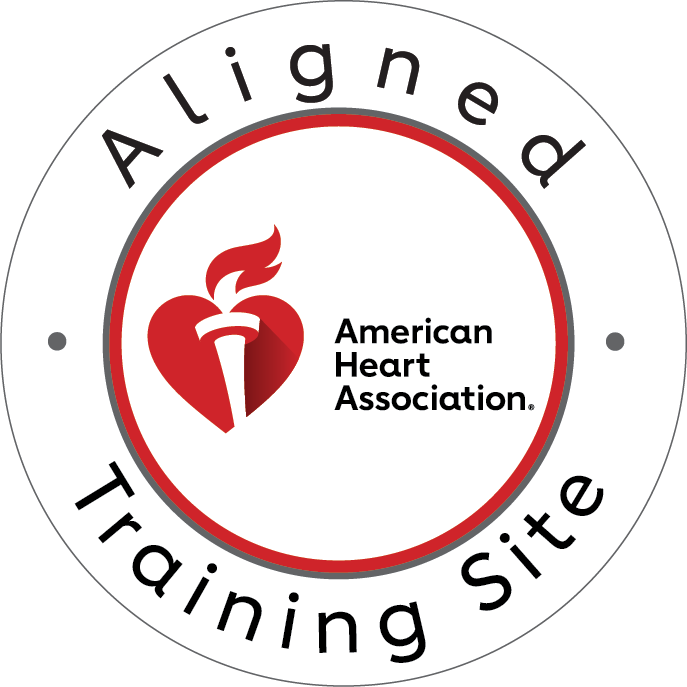Cardiopulmonary resuscitation (CPR) stands as a cornerstone of emergency medical care, representing the frontline response to cardiac arrest and other life-threatening events. At its core, CPR aims to maintain blood circulation and deliver oxygen to vital organs when the heart ceases to function effectively. However, effective CPR goes beyond chest compressions alone; it encompasses a comprehensive approach that includes airway management—a crucial component often overlooked but integral to successful resuscitation outcomes.
Understanding Airway Obstruction
Imagine a scenario where a person suddenly collapses, their airway obstructed by a foreign object, or due to physiological factors. In such instances, every passing second becomes a race against time. Without immediate intervention to clear the airway, the brain rapidly begins to suffer from oxygen deprivation, leading to irreversible damage or even death.
An obstructed airway impedes the flow of oxygen into the lungs, rendering traditional breathing ineffective and disrupting the body’s ability to exchange gases essential for life. Common causes of airway obstruction include choking on food or foreign objects, trauma to the neck or face, or medical conditions such as allergic reactions or respiratory infections.
During cardiac arrest, the body’s natural mechanisms for maintaining airway patency become compromised. The loss of consciousness results in a relaxation of the muscles in the throat, potentially causing the tongue to fall backward and block the airway—a phenomenon known as the “tongue obstruction.” Additionally, the epiglottis, a flap of tissue that normally covers the entrance to the trachea during swallowing, may fail to close properly, further exacerbating the risk of airway compromise.
In the absence of effective airway management, attempts to provide ventilation through mouth-to-mouth resuscitation or bag-valve-mask ventilation may prove futile, as the airway remains obstructed. Consequently, oxygen delivery to the lungs is limited, impeding the restoration of adequate circulation and perpetuating the cycle of cardiac arrest.
The Physiology of Airway Management
To grasp the significance of airway management during CPR, it’s essential to understand the intricate physiology of the airway and its role in facilitating oxygen exchange. The airway encompasses a complex network of structures responsible for delivering oxygen-rich air to the lungs while expelling carbon dioxide—a process vital for sustaining life.
At the forefront of airway management lies the upper respiratory tract, comprising the nasal cavity, mouth, pharynx, larynx, and trachea. These structures work in tandem to facilitate breathing and protect the delicate tissues of the lower airways from foreign particles and pathogens.
During normal breathing, air enters the body through the nasal passages or mouth, where it is filtered, warmed, and humidified before reaching the lungs. The pharynx serves as a common pathway for both air and food, ensuring proper passage to their respective destinations—the larynx for air and the esophagus for food and liquids.
One of the primary challenges during CPR is overcoming the natural tendency of the tongue to obstruct the airway when the person loses consciousness. The tongue, a muscular organ situated at the base of the mouth, can fall backward and occlude the oropharynx—a phenomenon exacerbated by the loss of muscle tone during cardiac arrest.
Another critical structure involved in airway management is the epiglottis—a thin, leaf-shaped cartilage located at the entrance to the larynx. Under normal circumstances, the epiglottis closes over the glottis, preventing food and liquids from entering the airway during swallowing. However, in the event of a medical emergency like cardiac arrest, this protective mechanism may fail, leading to the aspiration of fluids or foreign objects into the lungs.
Effective airway management aims to overcome these physiological challenges by establishing and maintaining a patent airway—free from obstruction and conducive to adequate ventilation. Techniques such as the head-tilt chin-lift maneuver or jaw thrust maneuver are employed to reposition the tongue and ensure the unobstructed flow of air into the lungs.
Importance of Early Airway Intervention
In the high-stakes environment of cardiac arrest, time is of the essence. Every moment that passes without adequate oxygen delivery to the brain increases the risk of irreversible neurological damage or death. Therefore, early intervention in managing the airway is paramount to improving outcomes in CPR.
When a person experiences cardiac arrest, the oxygen supply to vital organs, including the brain and heart, is abruptly cut off. Without immediate intervention to restore circulation and oxygenation, irreversible tissue damage occurs within minutes. This underscores the critical importance of initiating CPR promptly and addressing airway obstruction without delay.
Early airway intervention serves two primary objectives: first, to establish a clear passage for air to enter the lungs, and second, to prevent the aspiration of vomit, fluids, or other foreign objects into the airway. By promptly clearing the airway and initiating ventilation, healthcare providers and bystanders can buy precious time and increase the likelihood of a positive outcome.
Moreover, effective airway management not only facilitates oxygen delivery but also enhances the efficacy of chest compressions. A patent airway ensures that each compression generates adequate intrathoracic pressure, promoting blood flow to vital organs and maximizing the chances of successful resuscitation.
The concept of early airway intervention is ingrained in the core tenets of the Chain of Survival—a systematic approach to improving survival rates in cardiac arrest. Alongside early recognition, prompt activation of emergency medical services, and defibrillation, airway management plays a pivotal role in optimizing each link of the chain.
Furthermore, the importance of early airway intervention extends beyond the realm of healthcare professionals to include bystanders and first responders. In many cases, bystander CPR is initiated before the arrival of professional rescuers, underscoring the critical role of laypersons in recognizing the signs of cardiac arrest and initiating life-saving interventions, including airway management.
Techniques for Airway Management:
Effective airway management during CPR encompasses a range of techniques and maneuvers aimed at ensuring a patent airway and facilitating adequate ventilation. From basic maneuvers that can be performed by bystanders to advanced interventions employed by healthcare professionals, each technique plays a crucial role in optimizing patient outcomes.
- Basic Airway Maneuvers:
- Head-Tilt Chin-Lift Maneuver: This technique involves gently tilting the head backward while lifting the chin upward to open the airway. It is particularly effective in patients without suspected cervical spine injury and helps to clear the obstruction caused by the tongue.
- Jaw Thrust Maneuver: In cases where cervical spine injury is suspected, the jaw thrust maneuver is preferred. This technique involves placing the hands on either side of the patient’s face and gently pushing the mandible upward to lift the jaw without extending the neck, thus maintaining spinal alignment while opening the airway.
- Use of Airway Adjuncts:
- Oropharyngeal Airway (OPA): OPA is a curved plastic device inserted into the mouth to prevent the tongue from obstructing the airway. It is commonly used in unconscious patients without a gag reflex to maintain airway patency during CPR.
- Nasopharyngeal Airway (NPA): NPA is a soft, flexible tube inserted through the nostril into the nasopharynx to establish a patent airway. It is often preferred in conscious patients or those with suspected cervical spine injury who cannot tolerate oral insertion of an OPA.
- Advanced Airway Management:
- Endotracheal Intubation: Endotracheal intubation involves the insertion of a cuffed tube directly into the trachea to secure the airway and facilitate mechanical ventilation. It is performed by trained healthcare providers and offers superior airway protection and control compared to supraglottic devices.
- Supraglottic Airway Devices: Supraglottic devices, such as the laryngeal mask airway (LMA) or esophageal-tracheal combi-tube (ETC), are alternative airway management options when endotracheal intubation is not feasible or contraindicated. These devices sit above the glottis and provide a conduit for ventilation without the need for direct visualization of the vocal cords.
Each of these techniques and devices has its indications, contraindications, and potential complications, underscoring the importance of proper training and proficiency in airway management skills. In the next section, we will delve deeper into the challenges and complications associated with airway management during CPR and discuss strategies for mitigating these risks effectively.
Challenges and Complications:
While airway management is essential for successful CPR, it is not without its challenges and potential complications. Healthcare providers must be prepared to address these obstacles promptly and effectively to optimize patient outcomes.
- Difficulty in Airway Access:
- Patients with anatomical abnormalities or facial trauma may present challenges in securing a clear airway using standard maneuvers.
- In obese individuals or those with limited neck mobility, proper positioning and alignment may be difficult to achieve, hindering airway management efforts.
- Risk of Aspiration:
- During CPR, the forceful chest compressions and artificial ventilation can increase the risk of regurgitation and aspiration of gastric contents.
- Aspiration pneumonia and airway obstruction due to aspirated material pose serious threats to patient safety and may complicate resuscitation efforts.
- Equipment Malfunction:
- Mechanical failure of airway adjuncts or ventilation devices can occur unexpectedly, disrupting the flow of oxygen and compromising patient care.
- Healthcare providers must be proficient in troubleshooting equipment issues and have backup plans in place to ensure uninterrupted airway management.
- Hemodynamic Instability:
- Aggressive airway interventions, such as endotracheal intubation or chest compressions, can lead to hemodynamic instability and compromise perfusion to vital organs.
- Healthcare providers must strike a delicate balance between maintaining airway patency and minimizing adverse effects on cardiac output and blood pressure.
- Delayed Recognition of Airway Obstruction:
- In some cases, airway obstruction may not be immediately apparent, leading to delays in intervention and exacerbation of hypoxia.
- Vigilant monitoring and continuous reassessment of the patient’s airway status are essential to detect and address obstruction promptly.
Addressing these challenges requires a multidisciplinary approach, effective communication among team members, and adherence to established protocols and guidelines. Healthcare providers must receive comprehensive training in airway management techniques and remain vigilant during resuscitation efforts to minimize the risk of complications and maximize the chances of a positive outcome.
Integration with CPR Protocols:
Airway management is an integral component of comprehensive CPR protocols and guidelines, playing a crucial role in optimizing patient outcomes during cardiac arrest. Its seamless integration with other aspects of resuscitation, including chest compressions, defibrillation, and medication administration, is essential for delivering effective and coordinated care.
- Early Recognition and Activation:
- The first link in the Chain of Survival emphasizes the importance of early recognition of cardiac arrest and prompt activation of emergency medical services (EMS).
- Recognizing the signs of airway obstruction and initiating interventions without delay are key elements of early response, paving the way for successful resuscitation.
- High-Quality CPR:
- Airway management is closely intertwined with the delivery of high-quality CPR, characterized by adequate chest compressions, minimal interruptions, and effective ventilation.
- Maintaining a patent airway ensures optimal oxygenation and ventilation, maximizing the effectiveness of chest compressions and enhancing perfusion to vital organs.
- Defibrillation:
- In cases of shockable rhythms, such as ventricular fibrillation or pulseless ventricular tachycardia, defibrillation is a critical intervention aimed at restoring normal cardiac rhythm.
- Clearing the airway and ensuring proper ventilation before and after defibrillation enhances the efficacy of electrical therapy and improves the likelihood of successful cardioversion.
- Medication Administration:
- Airway management may influence the pharmacokinetics and efficacy of medications administered during CPR, such as epinephrine or vasopressin.
- Ensuring adequate oxygenation and ventilation optimizes drug delivery and enhances the responsiveness of cardiac tissues to pharmacological interventions.
- Post-Resuscitation Care:
- Following successful resuscitation, ongoing airway management is essential for supporting spontaneous breathing and maintaining adequate oxygenation.
- Healthcare providers must remain vigilant for potential complications, such as airway edema or aspiration, and implement appropriate interventions to mitigate these risks.
By seamlessly integrating airway management with other elements of CPR protocols, healthcare providers can optimize the delivery of care and improve patient outcomes. Standardized approaches, effective teamwork, and adherence to evidence-based guidelines are paramount in achieving success in resuscitation efforts.
Conclusion
In the high-stakes realm of cardiac arrest, where every second counts, effective airway management emerges as a cornerstone of successful resuscitation. By ensuring a patent airway and optimizing oxygenation and ventilation, healthcare providers and bystanders alike can significantly improve the chances of survival and minimize the risk of neurological sequelae.
From basic maneuvers such as the head-tilt chin-lift and jaw thrust to advanced interventions like endotracheal intubation, the arsenal of airway management techniques equips responders with the tools needed to overcome physiological challenges and restore normal breathing. Early recognition of airway obstruction, prompt initiation of interventions, and seamless integration with CPR protocols are essential components of a coordinated and effective resuscitation effort.
Furthermore, the importance of ongoing training and proficiency in airway management skills cannot be overstated. Healthcare providers must receive comprehensive education and regular updates on the latest guidelines and techniques to ensure readiness to respond to cardiac arrest emergencies confidently. CPR certification in Cincinnati, offered by trusted American Heart Association training sites like CPR Cincinnati, provides healthcare professionals and laypersons with the necessary skills and knowledge to perform life-saving interventions with confidence.
For bystanders, recognizing the signs of cardiac arrest and initiating immediate action, including hands-on CPR and activation of EMS, can make a lifesaving difference. Basic airway maneuvers, such as opening the airway and providing rescue breaths, can help buy precious time until professional help arrives.
In conclusion, airway management during CPR is not merely a technical skill but a lifesaving intervention that demands precision, vigilance, and teamwork. By prioritizing early recognition, prompt intervention, and seamless integration with broader resuscitation efforts, we can enhance survival rates and improve outcomes for cardiac arrest patients worldwide.
Remember, in the critical moments of cardiac arrest, every breath matters, and every action counts. Together, let us continue to champion excellence in airway management and CPR, supported by reputable CPR certification in Cincinnati training sites like CPR Cincinnati, to save lives and make a meaningful difference in our communities.




